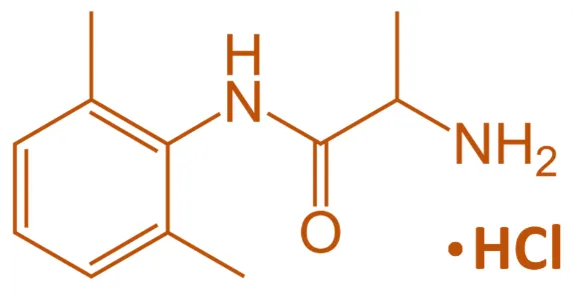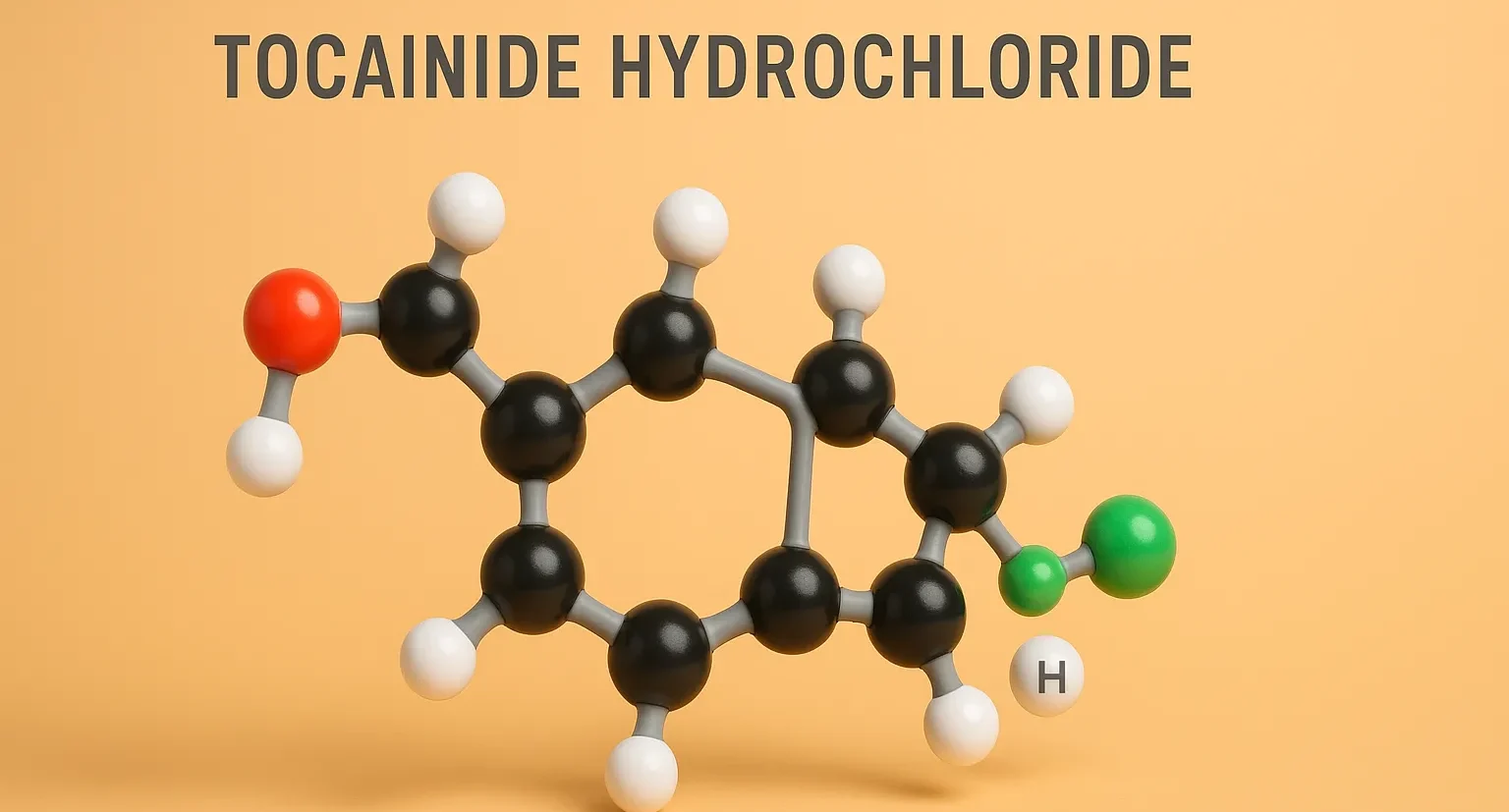Tocainide Hydrochloride is a class Ib anti-arrhythmic used to manage ventricular arrhythmias by inhibiting sodium influx.
Structure of Tocainide Hydrochloride
- Tocainide hydrochloride is an amide-type antiarrhythmic agent structurally related to procainamide. It features a diethylaminoethyl side chain attached to a 2,6-dimethyl-p-aminobenzoic acid core.
- Chemical Formula: C₁₀H₁₅N₃O₂S·HCl

Mode of Action
- Class IA Antiarrhythmic: Blocks fast sodium channels, prolongs action potential duration and refractory period.
- Potassium Channel Blockade: Extends repolarization by inhibiting potassium efflux.
- Effect on Heart Rate: Converts atrial fibrillation to sinus rhythm and prevents reentrant arrhythmias.
- Faster Onset: Compared to procainamide, tocainide has a more rapid onset of action.
Advertisements
Uses
- Ventricular Arrhythmias: Treats ventricular tachycardia and ventricular fibrillation.
- Atrial Arrhythmias: Manages atrial fibrillation and atrial flutter.
- Reentrant Arrhythmias Prevention: Effective in preventing recurrence post-cardiac events.
- Antiarrhythmic Prophylaxis: Used after myocardial infarction to prevent arrhythmias.

